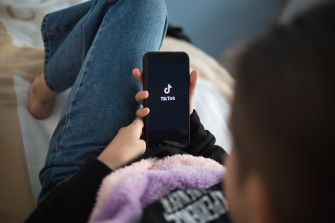A federal judge in California has ordered TikTok to turn over a limited set of internal records connected to a content creator on its platform. The order is part of the Social Media Adolescent Addiction/Personal Injury Products Liability multidistrict litigation, which combines hundreds of lawsuits against some of the largest social media companies in the United States.
Issued on October 20 by U.S. Magistrate Judge Peter H. Kang, the ruling directs TikTok to produce communications and materials concerning influencer Eugenia Cooney’s May 2025 livestream, during which she appeared to fall ill while broadcasting live, and her visit to the company’s New York offices soon after. Cooney, who has publicly shared her struggle with anorexia and has more than two million followers on TikTok, became the focus of public concern after the incident, as viewers questioned whether the platform had adequate safeguards for creators whose health issues become visible online. Plaintiffs argue that internal communications from that time could show what TikTok knew about potential harm to users or whether it took any action in response.
The consolidated lawsuits, overseen by Judge Yvonne Gonzalez Rogers in the Northern District of California, accuse Meta, TikTok, YouTube, and Snapchat of designing their platforms to encourage compulsive use among minors. Plaintiffs, including parents, school districts, and young users, claim that features like infinite scrolling, push notifications, and personalized recommendations are intentionally designed to maintain user engagement for extended periods. This practice, they assert, has adverse effects on mental health, leading to conditions such as anxiety, depression, and eating disorders.
By framing these social media platforms as consumer products, the plaintiffs argue the companies are legally responsible for foreseeable harm caused by their design choices and their failure to warn users about those risks. This argument follows product liability law, which holds manufacturers accountable for unsafe designs or inadequate safety warnings. Plaintiffs say the addictive nature of these digital products functions like a design defect and claim internal research shows the companies were aware of potential harms but prioritized growth and profit instead.
All defendants involved in the case deny any wrongdoing. They maintain that their platforms are protected under Section 230 of the Communications Decency Act, a federal law that shields online services from liability for user-generated content. In their view, most of the alleged harm stems from what users post or view, which they say cannot be the basis for legal responsibility. The companies also cite the First Amendment, arguing that decisions about how information appears on their platforms involve editorial choices protected as free speech.
The October 20 order focuses on how much additional discovery TikTok must provide in connection with the Cooney incident. Plaintiffs asked the court to compel more internal records, arguing that they could show what the company knew about potential harm to vulnerable users. TikTok objected, saying the request went beyond the scope of the case and that it had already produced hundreds of documents mentioning Cooney.
Judge Kang granted the motion in part but set limits. He ordered TikTok to produce documents from employees responsible for user safety, media inquiries, or complaint handling, restricted to communications about Cooney’s May 2025 livestream and office visit. The judge denied broader requests for historical records and rejected efforts to compel Cooney’s testimony, emphasizing that she is a private individual not involved in the case.
The court said its reasoning followed federal rules that keep discovery proportional and focused on information relevant to the case. In simple terms, these rules prevent either side from demanding excessive or repetitive searches once discovery has closed. By applying those limits, Judge Kang allowed a narrow inquiry into TikTok’s handling of the incident while rejecting requests for older records that were not relevant to the specific incident involving Cooney’s livestream.
A separate order issued the same day took a similar approach. In that matter, plaintiffs sought access to internal files belonging to two corporate witnesses, one from TikTok and one from YouTube, whose testimony could be used at trial. The judge again permitted only targeted searches related to the topics that those witnesses had already discussed under oath, emphasizing that discovery in this litigation must remain consistent and balanced across all defendants.
TikTok must complete the ordered production by December 4, with weekly updates beginning in mid-November.






